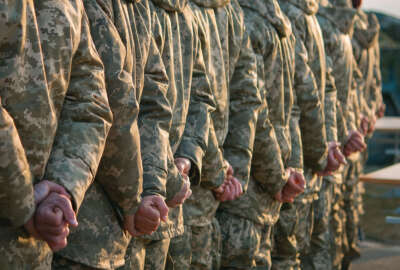DoD crowdsources combat vehicle designs
The Defense Advanced Research Projects Agency is working on the Experimental Crowd-derived Combat-support Vehicle.
wfedstaff | June 3, 2015 11:04 pm
By Jolie Lee
Federal News Radio
The Defense Advanced Research Projects Agency turned to the public for ideas to design a combat vehicle body.
The Experimental Crowd-derived Combat-support Vehicle (XC2V) Design Challenge seeks design ideas for a combat reconnaissance and delivery and evacuation vehicle.
Voting has closed on the top three designs, and the winning entry will become a working concept vehicle in a few months.
Army Lt. Colonel Nathan Wiedenman, deputy program manager for DARPA’s Adaptive Vehicle Make Portfolio, said crowdsourcing can produce “whoa moments” with ideas that DoD employees might never have developed themselves.
“You get some wacky ideas, and that can be good and bad,” Wiedenman said in an interview with In Depth.
DARPA partnered with Local Motors, an open source automobile design company. Through the partnership, DARPA was able to tap into a pool of innovators who would not otherwise contribute to military designs, Wiedenman said.
Wiedenman said DARPA turns to crowdsourcing for ideas because it takes more money and time to produce ideas in-house.
“We’re stuck in this, we have to design, build, test, redesign, build, test iteration, and a way to get around that – a way to design things faster, a way to develop things faster – is to access a broader idea pool,” Wiedenman said. “Crowdsourcing is a way of doing that, getting innovation from a broader expanse of people so we can develop these things more quickly.”
DARPA has used crowdsourcing in the past. The first DARPA Grand Challenge, in 2004, awarded $1 million in a race between driverless vehicles. The DARPA Network challenge was another competition to innovate real-time communications.
Wiedenman shared lessons learned from the previous challenges:
- Spend time getting the community excited and engaged.
- Build an infrastructure to allow people to collaborate and share ideas. In other ways, allow the community to engage with one another.
- Make sure you have a good set of rules and guidelines that are “crystal clear.”
Widenman said he believes the ideas coming out of the XC2V Challenge will apply to real-world military uses.
“We didn’t know going in, Can we get something militarily relevant, something worthwhile out of this process?” he said. “And we think in the long-run the answer is yes.”
This story is part of Federal News Radio’s daily DoD Report. For more defense news, click here.
Copyright © 2025 Federal News Network. All rights reserved. This website is not intended for users located within the European Economic Area.





